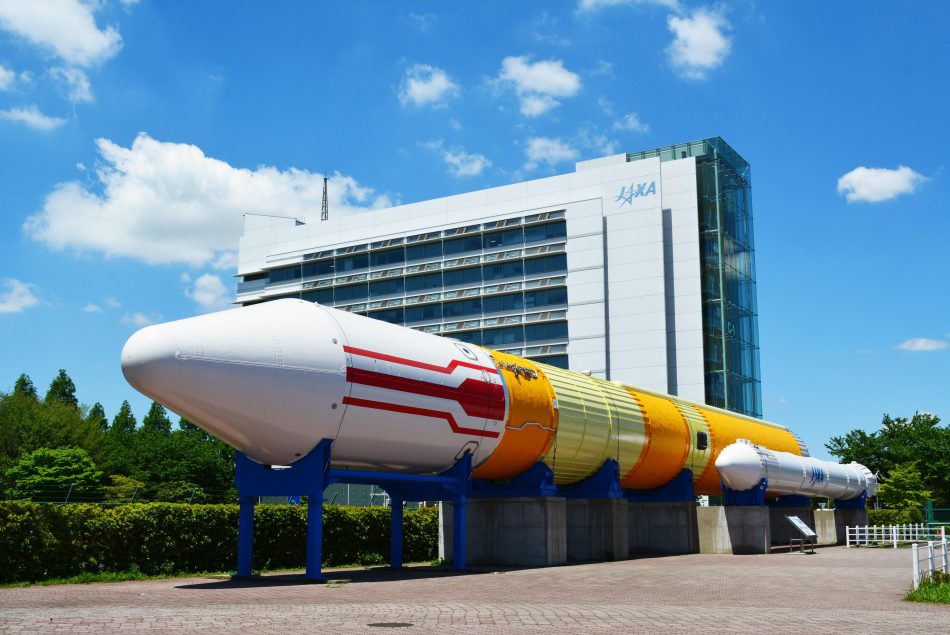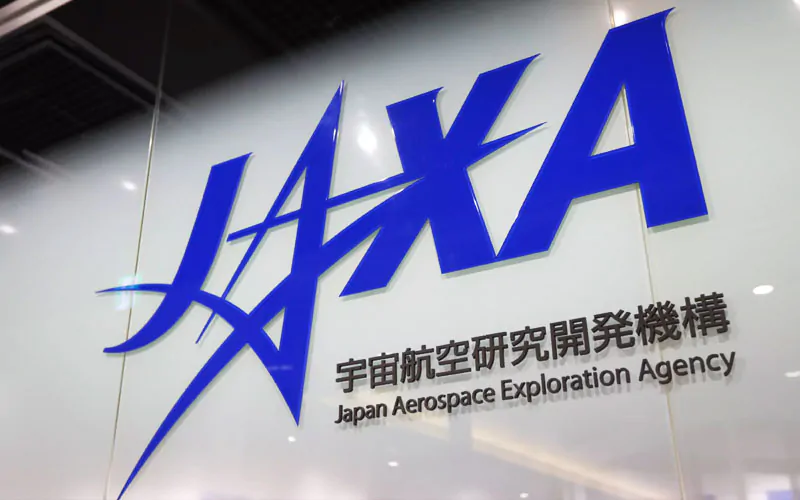JAXA
JAXA, the Japan Aerospace Exploration Agency, was established in October 2013 through the amalgamation of three institutions: the Institute of Space and Astronautical Science (ISAS), the National Aerospace Laboratory of Japan (NAL), and the National Space Development Agency of Japan (NASDA). Its primary role is to serve as a core performance agency, dedicated to supporting the comprehensive aerospace development and utilization goals of the Japanese government. This designation empowers JAXA to manage the entire spectrum of aerospace activities, encompassing fundamental research and development through to practical utilization.
In 2013, as part of its 10th-anniversary celebration since its inception, JAXA introduced the corporate slogan, “Explore to Realize.” This slogan embodies JAXA’s guiding philosophy, emphasizing the utilization of space and the sky as means to realize a secure and prosperous society.
Before the merger, the Institute of Space and Astronautical Science (ISAS) was primarily responsible for space and planetary research, while the National Aerospace Laboratory of Japan (NAL) focused on aviation research. Meanwhile, the National Space Development Agency of Japan (NASDA), founded on October 1, 1969, specialized in the development of rockets and satellites, and played a key role in constructing the Japanese Experiment Module. The former NASDA headquarters were situated at the current location of the Tanegashima Space Center, on Tanegashima Island, approximately 115km south of Kyūshū. NASDA also provided training for Japanese astronauts who participated in missions aboard US Space Shuttles.


In 2008, the passage of the Basic Space Law resulted in a shift of JAXA’s jurisdictional authority from the Ministry of Education, Culture, Sports, Science and Technology (MEXT) to the Strategic Headquarters for Space Development (SHSD) within the Cabinet, led by the Prime Minister. Additionally, in 2016, the National Space Policy Secretariat (NSPS) was established under the Cabinet.
Planning missions for interplanetary research is a time-intensive endeavor that can span many years. Due to the substantial time lag between the occurrence of interplanetary events and the commencement of mission planning, there is a risk of missing opportunities to gain new insights into the cosmos. To mitigate this issue, JAXA has devised a strategy involving smaller and more expedient missions, which it began implementing from 2010 onward.
In 2012, new legislation expanded JAXA’s mandate, allowing it to engage in certain military space development activities, such as the development of missile early warning systems, in addition to its peaceful purposes. The political oversight of JAXA transitioned from MEXT to the Prime Minister’s Cabinet Office, which established a new Space Strategy Office for this purpose.
JAXA is composed of the following organizations:
- Space Technology Directorate I
- Space Technology Directorate II
- Human Spaceflight Technology Directorate
- Research and Development Directorate
- Aeronautical Technology Directorate
- Institute of Space and Astronautical Science (ISAS)
- Space Exploration Innovation Hub Center
JAXA, headquartered in Chōfu, Tokyo, has research centers in many locations in Japan, and some offices overseas. The company also has:
- Earth Observation Research Center (EORC), based in Tokyo.
- Earth Observation Center (EOC) in Hatoyama, Saitama.
- Noshiro Testing Center (NTC) in Noshiro, Akita – Established in 1962. It carries out development and testing of rocket engines.
- Sanriku Balloon Center (SBC) – Balloons have been launched from this site since 1971.
- Kakuda Space Center (KSPC) in Kakuda, Miyagi. This company leads the development of rocket engines and works mainly with development of liquid-fuel engines.
- Sagamihara Campus (ISAS) in Sagamihara, Kanagawa for development of experimental equipment for rockets and satellites.
- Tanegashima Space Center in Tanegashima, Kagoshima which is currently the launch site for the H-IIA and H3 rockets.
- Tsukuba Space Center (TKSC) in Tsukuba, Ibaraki. This is the center of Japan’s space network. It is involved in research and development of satellites and rockets, and tracking and controlling of satellites. It develops experimental equipment for the Japanese Experiment Module (“Kibo”). Training of astronauts also takes place here. For International Space Station (ISS) operations, the Japanese Flight Control Team is located at the Space Station Integration & Promotion Center (SSIPC) in Tsukuba. SSIPC communicates regularly with ISS crewmembers via S-band audio.
- Uchinoura Space Center in Kimotsuki, Kagoshima, currently the launch site for the Epsilon rocket.
Launch Vehicles
JAXA employs various launch vehicles to cater to its diverse mission requirements. As a medium-lift launch vehicle, JAXA utilizes the H-IIA rocket, inherited from the former NASDA entity. Furthermore, JAXA has developed a new medium-lift launch vehicle known as the H3. Launch provider MHI Launch Services is operating the rockets and launch sites.
For missions with smaller payloads, JAXA employs the Epsilon rocket, offering an efficient solution. In the realm of upper atmospheric experiments, JAXA relies on a range of sounding rockets, including the SS-520, S-520, and S-310.
In the annals of Japanese space exploration, several historical orbital rockets have been retired over time. These include the Lambda 4S (L-4S), the Mu rocket family (M-4S, M-3C, M-3H, M-3S, M-3SII, M-V), as well as the N-I, N-II, H-I, H-II, and H-IIB rockets.
Japan embarked on its inaugural satellite mission with the launch of Ohsumi in 1970, utilizing the ISAS’ L-4S rocket. Before the merger, ISAS primarily employed small solid-fueled launch vehicles, while NASDA focused on the development of larger liquid-fueled launchers. In the initial stages, NASDA relied on licensed American models for its rockets. The first domestically developed liquid-fueled launch vehicle in Japan, the H-II, made its debut in 1994. However, the late 1990’s witnessed Japanese rocket technology facing criticism following two H-II launch failures.
Under JAXA, Japan’s first space mission encountered a setback when an H-IIA rocket launch on November 29th, 2003, experienced failure due to stress-related issues. After a hiatus lasting 15 months, JAXA achieved success by launching an H-IIA rocket from the Tanegashima Space Center, deploying a satellite into orbit on February 26th, 2005.
In September 2009, the inaugural launch of the H-IIB rocket marked a triumph as it successfully delivered the HTV-1 freighter, aimed at resupplying the International Space Station.
To facilitate the launch of smaller missions, JAXA developed the Epsilon solid-fueled rocket as a successor to the retired M-V. Its maiden flight took place successfully in 2013, with six launches to its name, including one launch failure.
In January 2017, JAXA faced a setback when its attempt to place a miniature satellite into orbit atop one of its SS520 series rockets failed. However, a subsequent attempt on February 2nd, 2018, proved successful, deploying a four-kilogram CubeSat into Earth’s orbit. Remarkably, the rocket, known as the SS-520-5, holds the title of the world’s smallest orbital launcher.
In January 2021, JAXA initiated launch trials for the H3 rocket at the Tanegashima Space Center, with the aim of phasing out and replacing the H-IIA series. Unfortunately, the maiden flight of the H3 in March 2023 ended in failure.
All trademarks, logos and images mentioned and showed on this page are property of their respective owners.
Resources
www.global.jaxa.jp
www.qzss.go.jp
www.gssc.esa.int
www.unoosa.org
www.space.skyrocket.de
www.wikipedia.org
www.nasa.gov
www.cnsa.gov.cn
www.gps.gov
www.euspa.europe.eu
www.glosnass-iac.ru
www.beidou.gov.cn
www.isro.gov.in
www.mhi.com